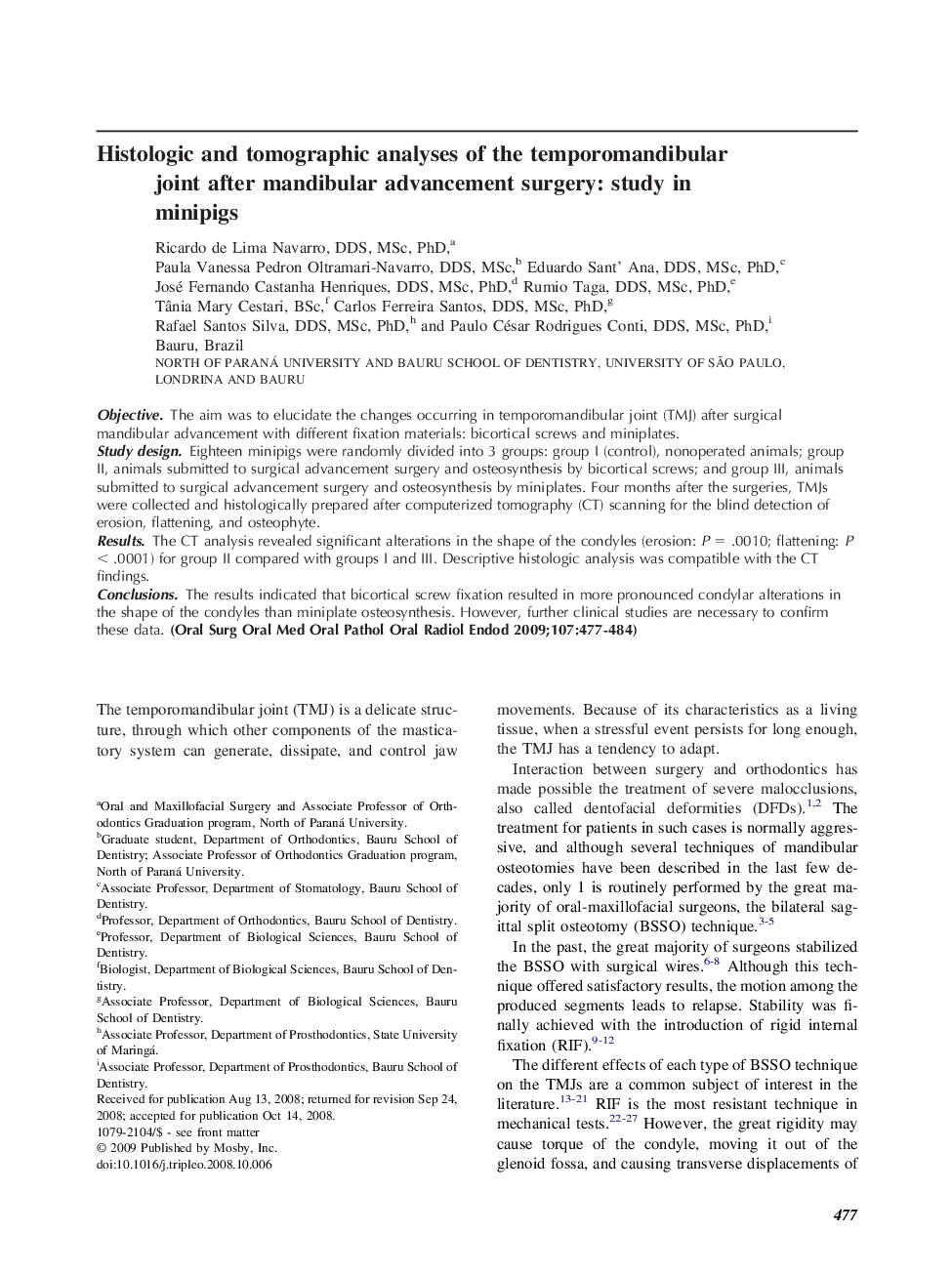| Article ID | Journal | Published Year | Pages | File Type |
|---|---|---|---|---|
| 3168360 | Oral Surgery, Oral Medicine, Oral Pathology, Oral Radiology, and Endodontology | 2009 | 8 Pages |
ObjectiveThe aim was to elucidate the changes occurring in temporomandibular joint (TMJ) after surgical mandibular advancement with different fixation materials: bicortical screws and miniplates.Study designEighteen minipigs were randomly divided into 3 groups: group I (control), nonoperated animals; group II, animals submitted to surgical advancement surgery and osteosynthesis by bicortical screws; and group III, animals submitted to surgical advancement surgery and osteosynthesis by miniplates. Four months after the surgeries, TMJs were collected and histologically prepared after computerized tomography (CT) scanning for the blind detection of erosion, flattening, and osteophyte.ResultsThe CT analysis revealed significant alterations in the shape of the condyles (erosion: P = .0010; flattening: P < .0001) for group II compared with groups I and III. Descriptive histologic analysis was compatible with the CT findings.ConclusionsThe results indicated that bicortical screw fixation resulted in more pronounced condylar alterations in the shape of the condyles than miniplate osteosynthesis. However, further clinical studies are necessary to confirm these data.
